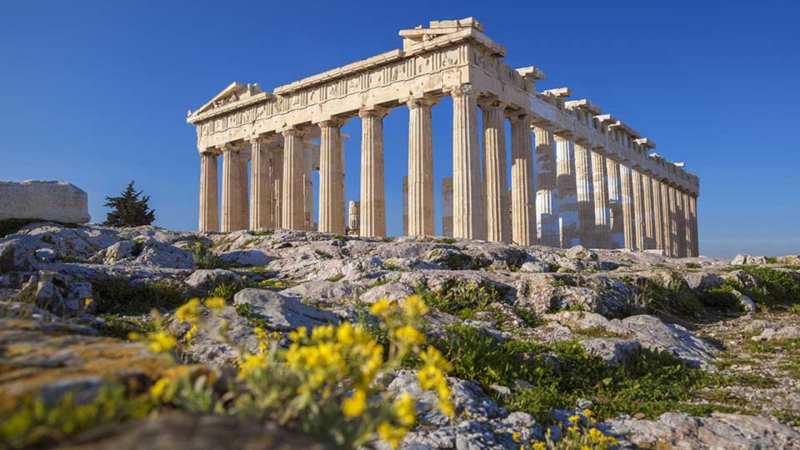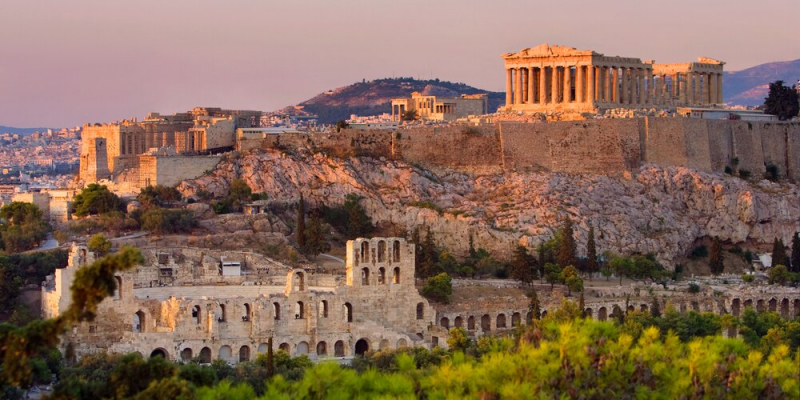Parthenon, Greece
The Greeks who survived and later won the war decided to leave the ruins on the hill as a reminder of what they had been through after Persian invaders burned the original acropolis to the ground. All of this changed in the fifth century when the then-Athenian General Pericles reasoned that while the idea was admirable, perhaps it would be better to erect a memorial that wasn't quite so offensive. As a result, the most well-known example of ancient Greek architecture exists.
The Acropolis, designed by Ictinus and Callicrates, is made up of several temples. These massive structures loom above the city of Athens, perched atop a high outcrop. The most famous of these is the Parthenon, a massive temple dedicated to the goddess Athena that was built between 447 and 432 BC. The temple held some of the finest examples of Greek sculpture in the form of the temple frieze and metopes, but don't expect to see any of those in Greece, given that the English took them all and aren't particularly eager to return them.
Completed: 432 BC
Function: Temple
Architect: Ictinus and Callicrates
Location: Athens, Greece














